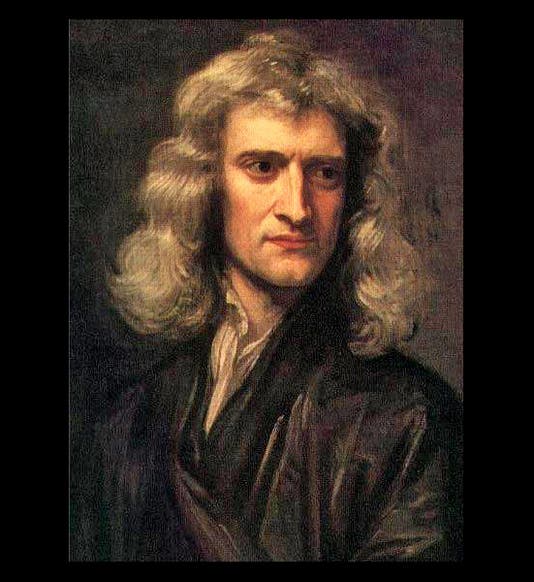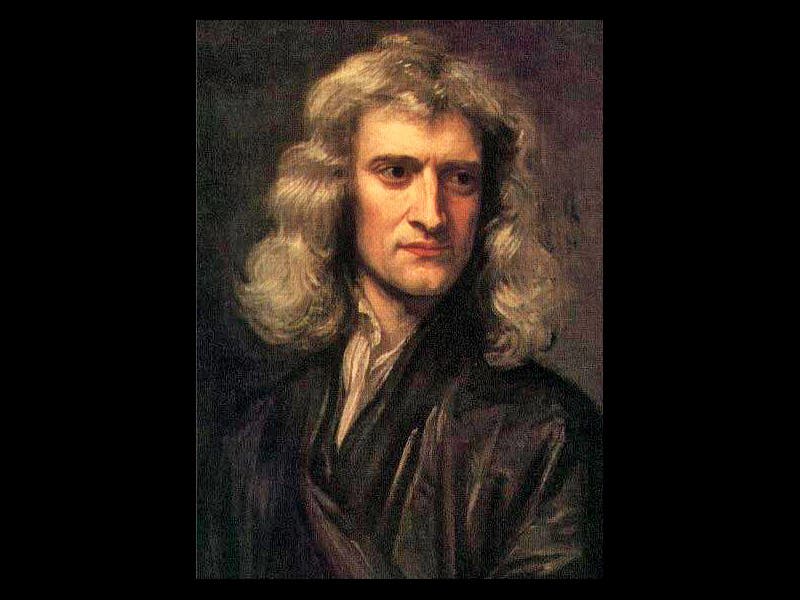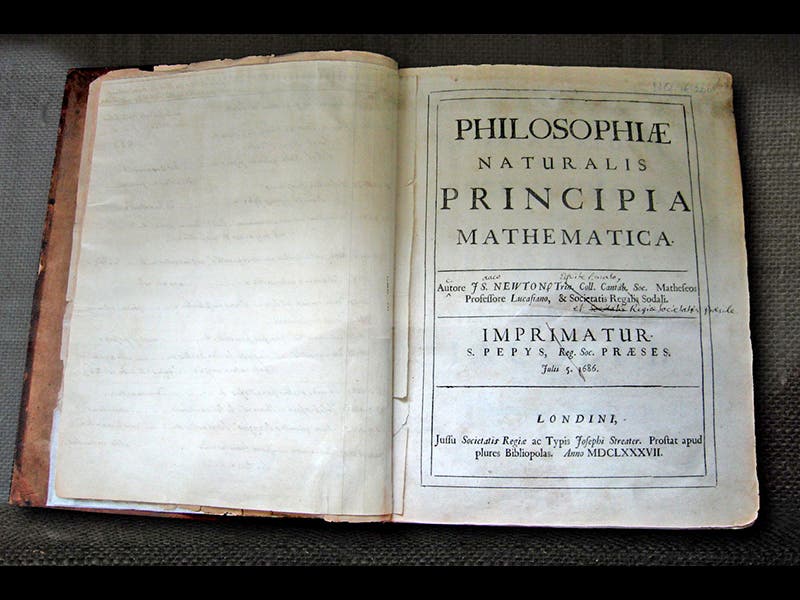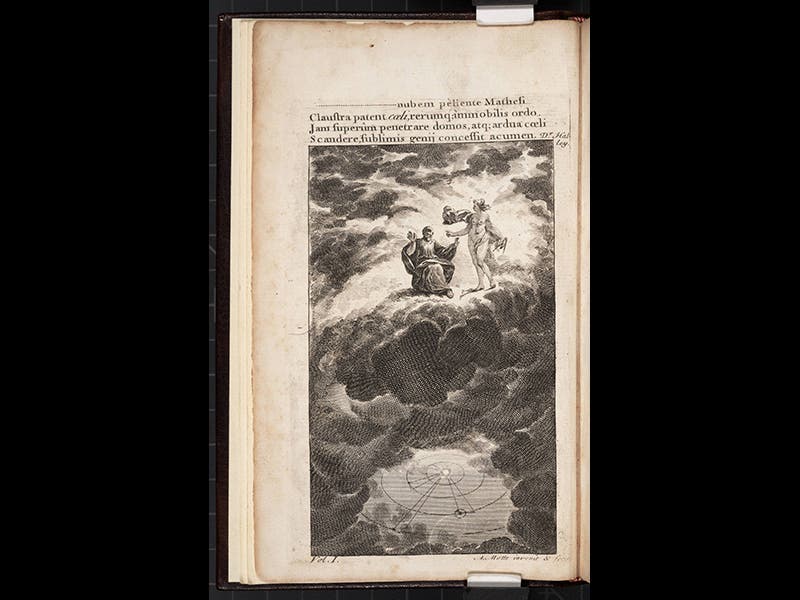Scientist of the Day - Isaac Newton
Isaac Newton was born Jan. 4, 1643. It used to be that we celebrated Newton’s birthday on Dec. 25, for his own birth records attest that he came into the world on Christmas Day, 1642. But the Julian calendar in use in England at the time of Newton’s birth was 10 days behind the Gregorian calendar that had been adopted by most of the Continent, so if you had asked Christiaan Huygens or Pierre Fermat for Newton’s birthday, they would have said Jan. 4, 1643. The generally accepted practice among historians today is to convert all Julian dates between 1582 (when the Gregorian calendar was first implemented) and 1752 (when England finally adopted the “new style” calendar) to Gregorian dates, and we have done so here.
Nearly everyone has heard of Isaac Newton and knows that he “discovered gravity”. What Newton actually proposed is the existence of a universal force of gravitation, so that any two objects in the universe are attracted to one another by a force that increases with the product of the masses of the two objects, and decreases with the square of the distance between them. With this force, Newton was able to explain: the rate at which an apple falls, the orbits of the moon and planets, the swing of a pendulum, the ebb and flow of the tides, and even the shape of the earth. Even though Newton did not know how this force acted at a distance, its explanatory power was so great that universal gravitation was almost universally adopted within twenty-five years of his death in 1727.
Newton’s equation for the force of gravitation, and his famous “laws of motion”, first appeared in his Mathematical Principles of Natural Philosophy (1687), usually referred to as the Principia, after the third word of the Latin title. We have nearly every edition of the Principia ever published, including the first, in our History of Science Collection. The first English translation of 1729 includes a frontispiece that not only deifies Newton, but nicely represents the solar system as bound together by gravitational forces (third image).
The copy of the 1687 Principia shown above (second image) is not our copy, but rather Newton’s own corrected copy, in the Cambridge University Library.
Dr. William B. Ashworth, Jr., Consultant for the History of Science, Linda Hall Library and Associate Professor, Department of History, University of Missouri-Kansas City. Comments or corrections are welcome; please direct to ashworthw@umkc.edu.








![Columbine, hand-colored woodcut, [Gart der Gesundheit], printed by Peter Schoeffer, Mainz, chap. 162, 1485 (Linda Hall Library)](https://assets-us-01.kc-usercontent.com:443/9dd25524-761a-000d-d79f-86a5086d4774/3829b99e-a030-4a36-8bdd-27295454c30c/gart1.jpg?w=210&h=210&auto=format&fit=crop)
